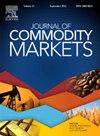Geopolitical risk and energy market tail risk forecasting: An explainable machine learning approach
IF 4.5
4区 经济学
Q1 BUSINESS, FINANCE
引用次数: 0
Abstract
This study develops a forecasting model for energy market tail risk, with a focus on the predictive role of geopolitical risk factors. Using daily energy commodities data spanning from 2000 to 2024, this study evaluates the performance of machine learning models. Results indicate that the Light Gradient Boosting Machine (LGBM) consistently outperforms other models based on key metrics. Robustness tests across different tail risk levels affirm LGBM as the optimal choice for energy market tail risk forecasting. Furthermore, model interpretability reveals that geopolitical risk indicators contribute significantly, with a 19.15 % impact on the forecasting model. Notably, the foreign exchange market, influences predictions by 15 %, while the monetary policy, contributes 12.19 %. Our findings have significant implications for regulators, industry practitioners, and investors seeking optimal tail risk forecasting during geopolitical conflicts.
地缘政治风险和能源市场尾部风险预测:一个可解释的机器学习方法
本研究建立能源市场尾部风险的预测模型,重点研究地缘政治风险因素的预测作用。使用2000年至2024年的每日能源商品数据,本研究评估了机器学习模型的性能。结果表明,基于关键指标的光梯度增强机(LGBM)始终优于其他模型。不同尾部风险水平的鲁棒性检验证实LGBM是能源市场尾部风险预测的最优选择。此外,模型的可解释性表明,地缘政治风险指标对预测模型的影响显著,为19.15%。值得注意的是,外汇市场对预测的影响为15%,而货币政策的影响为12.19%。我们的研究结果对在地缘政治冲突中寻求最佳尾部风险预测的监管机构、行业从业者和投资者具有重要意义。
本文章由计算机程序翻译,如有差异,请以英文原文为准。
求助全文
约1分钟内获得全文
求助全文
来源期刊

Journal of Commodity Markets
Multiple-
CiteScore
5.70
自引率
2.40%
发文量
53
期刊介绍:
The purpose of the journal is also to stimulate international dialog among academics, industry participants, traders, investors, and policymakers with mutual interests in commodity markets. The mandate for the journal is to present ongoing work within commodity economics and finance. Topics can be related to financialization of commodity markets; pricing, hedging, and risk analysis of commodity derivatives; risk premia in commodity markets; real option analysis for commodity project investment and production; portfolio allocation including commodities; forecasting in commodity markets; corporate finance for commodity-exposed corporations; econometric/statistical analysis of commodity markets; organization of commodity markets; regulation of commodity markets; local and global commodity trading; and commodity supply chains. Commodity markets in this context are energy markets (including renewables), metal markets, mineral markets, agricultural markets, livestock and fish markets, markets for weather derivatives, emission markets, shipping markets, water, and related markets. This interdisciplinary and trans-disciplinary journal will cover all commodity markets and is thus relevant for a broad audience. Commodity markets are not only of academic interest but also highly relevant for many practitioners, including asset managers, industrial managers, investment bankers, risk managers, and also policymakers in governments, central banks, and supranational institutions.
 求助内容:
求助内容: 应助结果提醒方式:
应助结果提醒方式:


